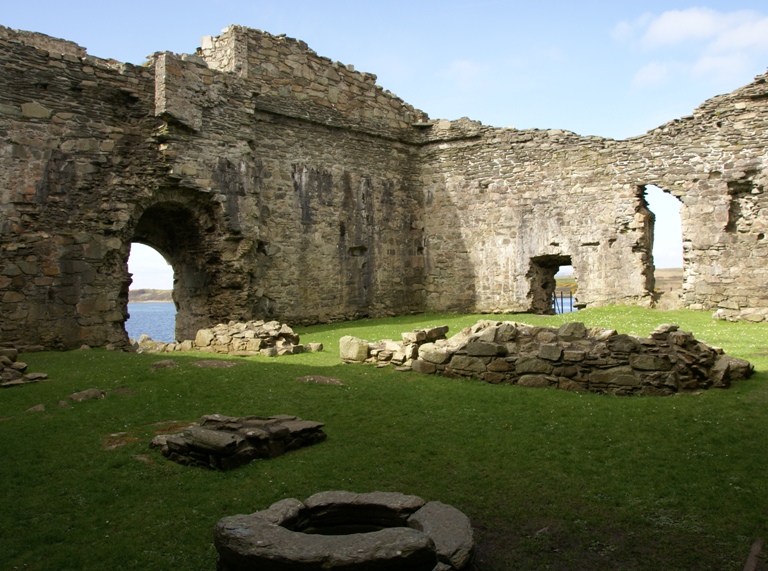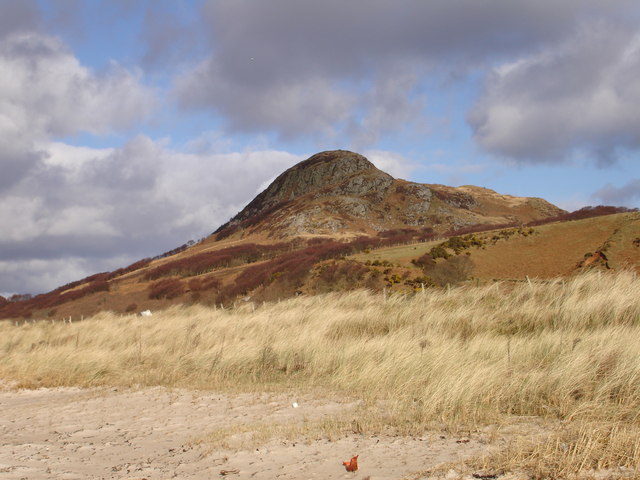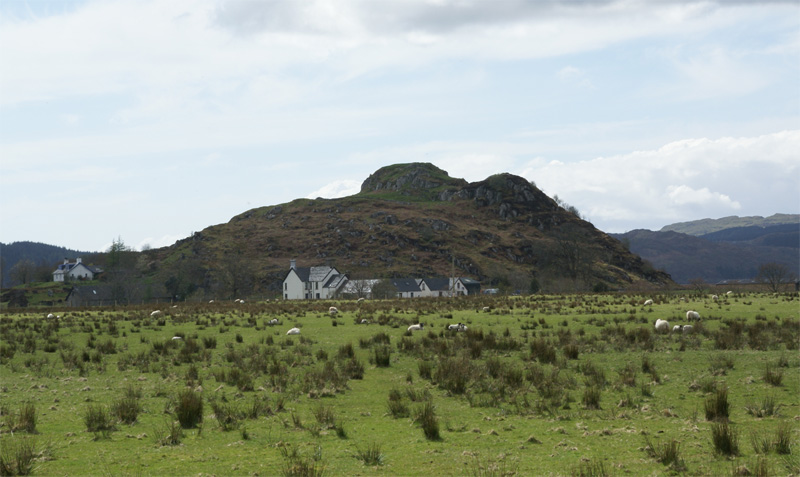|
Clann-Sweeny
Clan Sweeney is an Irish clan of Scottish origin. The Mac Suibhne family did not permanently settle in Ireland before the beginning of the 14th century, when they became Gallowglass soldiers for the Ua Domnaill dynasty of Tír Chonaill. The clan also claims an Irish descent from a prince of the Uí Néill dynasty, Ánrothán Ua Néill, son of Áed, son of Flaithbertach Ua Néill, King of Ailech and Cenél nEógain, died 1036. Through this descent the clan can claim a descent from Niall Noigíallach (''Niall of the Nine Hostages''). Origins '' Leabhar Clainne Suibhne'' states that after Áed's death, although his older brother Domnall was the rightful heir, Ánrothán was chosen instead to be king. Ánrothán then gave up the kingship to his brother and made for Argyll, Scotland where he married a daughter of the King of Scotland. Ánrothán's great-grandson was Suibhne, from whom the clan derived its name. The history from ''Leabhar Clainne Suibhne'' may be a fabri ... [...More Info...] [...Related Items...] OR: [Wikipedia] [Google] [Baidu] |
Suibhne Mac Duinnshléibhe
Suibhne mac Duinnshléibhe was a late 12th-century, and early 13th-century, lord in Argyll. He does not appear in contemporary records, although his name appears in the patronymic names of two of his sons. Suibhne appears in the 16th century '' Leabhar Chlainne Suibhne'', which documents the early history of Clann Suibhne. This account claims that he is the ancestor of Irish clan, and that he was the builder of Castle Sween in Knapdale, Argyll. However, other sources suggest the castle was built in the late 11th century by Suibhne MacAnrahan, brother of the High King of Ireland. Suibhne is said to be identical to the "Swineruo", or ''Suibhne Ruadh'' ("Suibhne the Red"), recorded in the ''Ane Accompt of the Genealogie of the Campbells'', a 17th-century Clan Campbell genealogy. Background Suibhne is thought to have flourished in the late 12th century, and early 13th century. Ewart; Triscott: pp. 517–518. He does not appear in any contemporary records, but the records of ... [...More Info...] [...Related Items...] OR: [Wikipedia] [Google] [Baidu] |
Alexander III Of Scotland
Alexander III (Medieval ; Modern Gaelic: ; 4 September 1241 – 19 March 1286) was King of Scots from 1249 until his death. He concluded the Treaty of Perth, by which Scotland acquired sovereignty over the Western Isles and the Isle of Man. His heir, Margaret, Maid of Norway, died before she could be crowned. Life Alexander was born at Roxburgh, the only son of Alexander II by his second wife Marie de Coucy. Alexander's father died on 6 July 1249 and he became king at the age of seven, inaugurated at Scone on 13 July 1249. The years of his minority featured an embittered struggle for the control of affairs between two rival parties, the one led by Walter Comyn, Earl of Menteith, the other by Alan Durward, Justiciar of Scotia. The former dominated the early years of Alexander's reign. At the marriage of Alexander to Margaret of England in 1251, Henry III of England seized the opportunity to demand from his son-in-law homage for the Scottish kingdom, but Alexander did not com ... [...More Info...] [...Related Items...] OR: [Wikipedia] [Google] [Baidu] |
Kilwinning Abbey
Kilwinning Abbey is a ruined abbey located in the centre of the town of Kilwinning, North Ayrshire. History Establishment of the Abbey Kilwinning was a Tironensians, Tironensian Benedictine monastic community, named after Tiron in the diocese of Chartres. The abbey was dedicated to Saint Winning and the Virgin Mary, and founded sometime between 1162 and 1188 with monks coming from Kelso, Scottish Borders, Kelso. The patron is not known for certain, but it may have been Richard de Morville, Lord of Cunninghame and Great Constable of Scotland, perhaps with the backing and assistance of King William I of Scotland, William of Scotland. A story developed that another Sir Richard de Morville who was involved in the murder of Thomas Becket was the founder of the abbey, however despite the likelihood of the families being the same, the dates of the events make this connection impossible. A connection that does exist is the founding of Arbroath Abbey in 1178, also a Tironensian abb ... [...More Info...] [...Related Items...] OR: [Wikipedia] [Google] [Baidu] |
Skipnish
Skipness ( gd, Sgibinis, ) is a village on the east coast of Kintyre in Scotland, located just over south of Tarbert and facing the Isle of Arran. There is Skipness Castle (a ruined castle) and Kilbrannan Chapel St Brendan's Chapel, also known as Kilbrannan Chapel, and Skipness Chapel, is a medieval chapel near Skipness, Argyll and Bute, Scotland. The chapel appears to have been built in the late 13th or early 14th century and was dedicated to St. Brendan ..., which contains some rare grave slabs. There is a nearby cafe that serves fresh fish from the area, and beer brewed on Arran, which can be seen from anywhere in Skipness. Also in the area, there is an organic tannery. There are cottages available to rent in Port na Chrò near the village that are situated by a beach. Both the castle and the chapel date from the 13th century, and are maintained by Historic Scotland. Many of the cottages which can be rented have their own boats and, during the summer months, mack ... [...More Info...] [...Related Items...] OR: [Wikipedia] [Google] [Baidu] |
Walter Bailloch
Walter Bailloch, also known as Walter Bailloch Stewart (1225/1230 – 1293/1294), was distinguished by the sobriquet ''Bailloch'' or ''Balloch'', a Goidelic languages, Gaelic nickname roughly translated as "the freckled". He was the Earl of Menteith ''jure uxoris''. Life Walter was a younger son of Walter Stewart, 3rd High Steward of Scotland, and his wife Beatrix of Angus, daughter of Gille Críst, Earl of Angus, Gilchrist, Earl of Angus.George Edward Cokayne, ''The complete peerage; or, A history of the House of lords and all its members from the earliest times'', Vol. VIII, eds. H. A. Doubleday; Howard de Walden (London: The St. Catherine Press, Ltd., 1932), p. 662 In 1258-59, Walter accompanied Louis IX of France on his Crusade, according to tradition. After the death of King Alexander II of Scotland he was aligned with the "English faction", and in 1255 secured the persons of the young King and Queen, but he was not at this time allowed to a share in the government.''Th ... [...More Info...] [...Related Items...] OR: [Wikipedia] [Google] [Baidu] |
Dubhghall Mac Suibhne
Dubhghall mac Suibhne ( fl. 1232 ×1241 – 1262) was a Scottish landholder in Argyll, and a leading member of Clann Suibhne. He was a son of Suibhne mac Duinn Shléibhe, and appears to have held lordship of Knapdale from at least the 1240s to the 1260s, and may have initiated the construction of Skipness Castle and Lochranza Castle. During Dubhghall's career, Clann Suibhne fell prey to the Stewarts, one of Scotland's most powerful families. By the 1240s, the Stewarts appear to have gained lordship in the Firth of Clyde and Cowal, whilst Alexander II, King of Scotland attempted to extend royal authority into Argyll and the Isles. It is in the context of this Scottish encroachment into Argyll that Dubhghall first appears on record, in an appeal to Pope Innocent IV for papal protection in 1247. Although Alexander II's campaign to annex Argyll and the Isles came to an immediate halt on his death in 1249, his son and successor, Alexander III, renewed hostilities in the 1260s. By ... [...More Info...] [...Related Items...] OR: [Wikipedia] [Google] [Baidu] |
Kintyre
Kintyre ( gd, Cinn Tìre, ) is a peninsula in western Scotland, in the southwest of Argyll and Bute. The peninsula stretches about , from the Mull of Kintyre in the south to East and West Loch Tarbert in the north. The region immediately north of Kintyre is known as Knapdale. Kintyre is long and narrow, at no point more than from west coast to east coast, and is less than wide where it connects to Knapdale. The east side of the Kintyre Peninsula is bounded by Kilbrannan Sound, with a number of coastal peaks such as Torr Mor. The central spine of the peninsula is mostly hilly moorland, the highest point being Beinn an Tuirc at .Ordnance Survey. Landranger 1:50,000 Map Sheet 68 (South Kintyre & Cambeltown) The coastal areas and hinterland, however, are rich and fertile. Kintyre has long been a prized area for settlers, including the early Scots who migrated from Ulster to western Scotland and the Vikings or Norsemen who conquered and settled the area just before the start of t ... [...More Info...] [...Related Items...] OR: [Wikipedia] [Google] [Baidu] |
Knapdale
Knapdale ( gd, Cnapadal, IPA: �kraʰpət̪əɫ̪ forms a rural district of Argyll and Bute in the Scottish Highlands, adjoining Kintyre to the south, and divided from the rest of Argyll to the north by the Crinan Canal. It includes two parishes, North Knapdale and South Knapdale. The area is bounded by sea to the east and west (Loch Fyne and the Sound of Jura respectively), whilst the sea loch of West Loch Tarbert almost completely cuts off the area from Kintyre to the south.Ordnance Survey. Landranger 1:50000 Map Sheet 55 (Lochgilphead & Loch Awe)Ordnance Survey. Landranger 1:50000 Map Sheet 62 (North Kintyre & Tarbert) The name is derived from two Gaelic elements: ''Cnap'' meaning hill and ''Dall'' meaning field. Knapdale gives its name to the Knapdale National Scenic Area, one of the forty national scenic areas in Scotland, which are defined so as to identify areas of exceptional scenery and to ensure their protection from inappropriate development. The designated area covers ... [...More Info...] [...Related Items...] OR: [Wikipedia] [Google] [Baidu] |
Castle Sween
Castle Sween, also known as Caisteal Suibhne, and Caistéal Suibhne, is located on the eastern shore of Loch Sween, in Knapdale, south of the forestry village of Achnamara on the west coast of Argyll, Scotland. Castle Sween is thought to be one of the earliest stone castles built in Scotland, having been built in the late 11th century. The castle's towers were later additions to wooden structures which have since vanished. History Castle Sween is the oldest stone castle in Scotland, built in the late 11th century by Suibhne, son of Hugh Anrahan, brother of the king of Ulster and High King of Ireland, from whom it takes its name Suibhne. Ewart; Triscott; Holmes et al. (1996) p. 518; MacPhee, Kathleen, ''Somerled, Hammer of the Norse'' (2004), p. 67. As late as the thirteenth century, the MacSweens possessed the surrounding lands of Knapdale. However, by the second half of the century, these territories passed into the hands of the Stewart/Menteith family. In 1310, Edward II, ... [...More Info...] [...Related Items...] OR: [Wikipedia] [Google] [Baidu] |
Skipness Castle
Skipness Castle stands on the east side of the Kintyre peninsula in Scotland, near the village of Skipness. Together with the nearby Kilbrannan Chapel it is a scheduled ancient monument. History The main structure of the castle was built in the early 13th century by the Clan MacSween, with later fortifications and other additions made to the castle through the 13th, 14th and 16th centuries. The castle was garrisoned with royal troops in 1494, during King James IV of Scotland's suppression of the Isles. James IV appointed Duncan Forestar as keeper of the castle. Archibald Campbell, 2nd Earl of Argyll, granted Skipness to his younger son, Archibald Campbell, in 1511. During the Wars of the Three Kingdoms The Wars of the Three Kingdoms were a series of related conflicts fought between 1639 and 1653 in the kingdoms of Kingdom of England, England, Kingdom of Scotland, Scotland and Kingdom of Ireland, Ireland, then separate entities united in a pers ... in 1646, the castle wa ... [...More Info...] [...Related Items...] OR: [Wikipedia] [Google] [Baidu] |
Isle Of Arran
The Isle of Arran (; sco, Isle o Arran; gd, Eilean Arainn) or simply Arran is an island off the west coast of Scotland. It is the largest island in the Firth of Clyde and the seventh-largest Scottish island, at . Historically part of Buteshire, it is in the unitary council area of North Ayrshire. In the 2011 census it had a resident population of 4,629. Though culturally and physically similar to the Hebrides, it is separated from them by the Kintyre peninsula. Often referred to as "Scotland in Miniature", the island is divided into highland and lowland areas by the Highland Boundary Fault and has been described as a "geologist's paradise".Haswell-Smith (2004) pp. 11–17. Arran has been continuously inhabited since the early Neolithic period. Numerous prehistoric remains have been found. From the 6th century onwards, Goidelic-speaking peoples from Ireland colonised it and it became a centre of religious activity. In the troubled Viking Age, Arran became the property of t ... [...More Info...] [...Related Items...] OR: [Wikipedia] [Google] [Baidu] |








